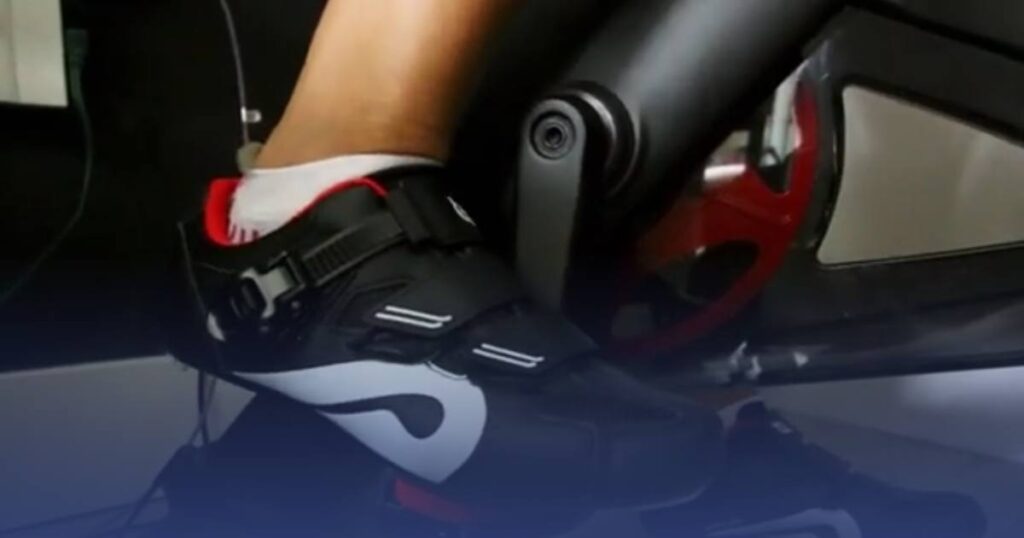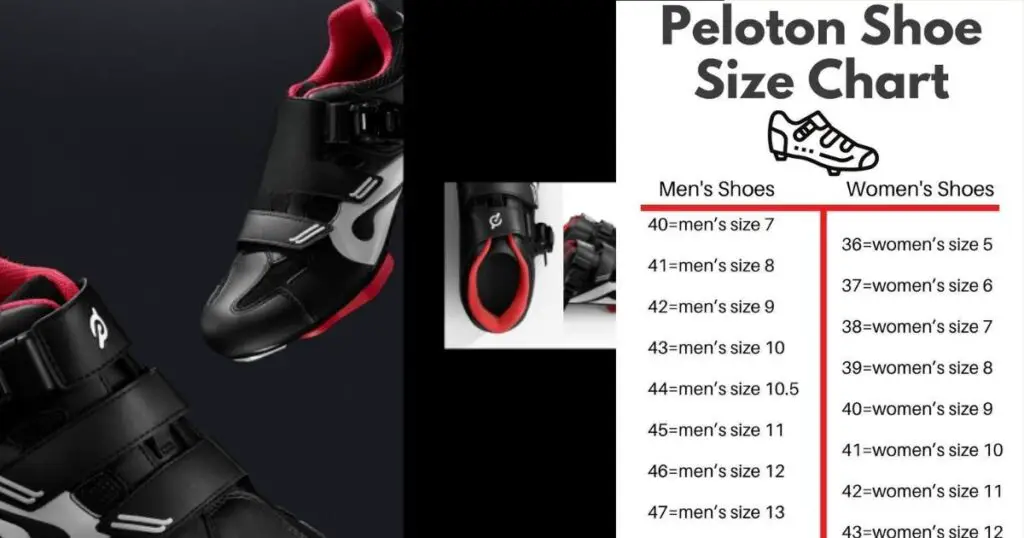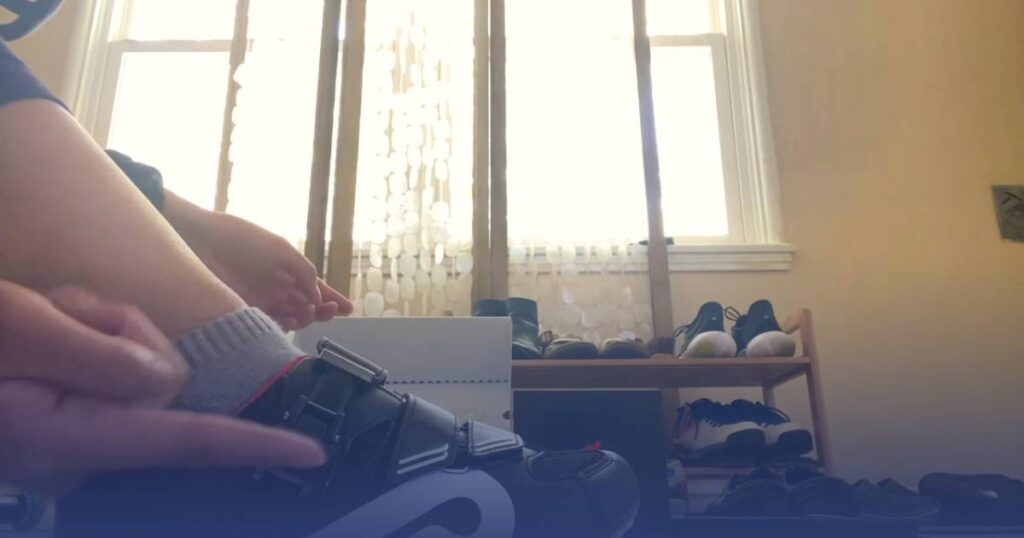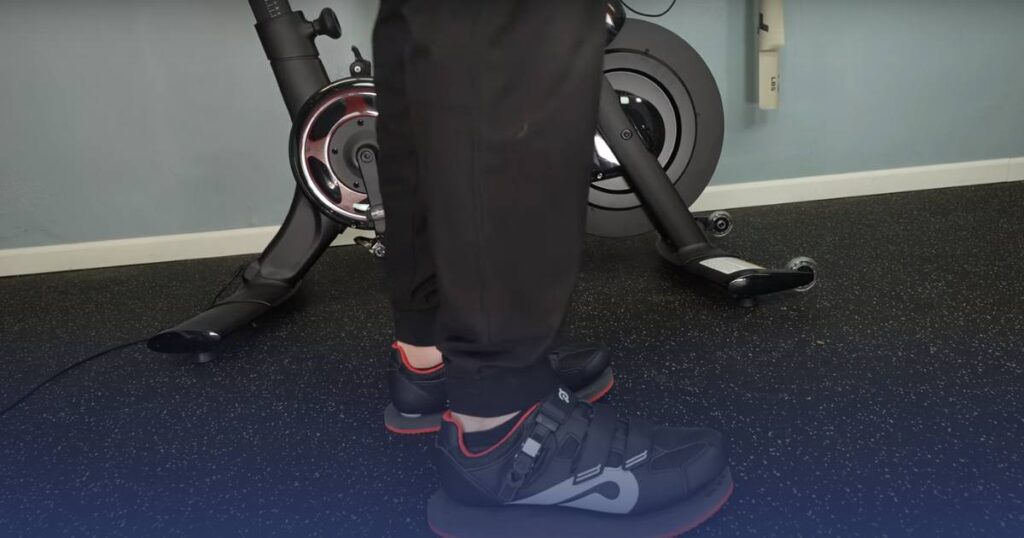Now, let’s unravel a common conundrum: “Do Peloton shoes run small?” It’s like decoding the secret language of your cycling gear. Peloton has its own sizing dance, and understanding it is your backstage pass to a shoe fit that’s both snug and stylish.
The quest for the perfect fit isn’t just about looking good (although that’s a bonus); it’s about making sure your feet are in sync with your Peloton journey. So, as we roll up our sleeves and dive into the world of Peloton shoe sizing, think of it as getting to know your shoes on a first-name basis—Demystifying the size rumors and arming you with the knowledge to pick the perfect fit. Ready to make your Peloton shoes your workout besties? Let’s lace up and find out together.
Factors Influencing Peloton Shoe Fit

Material and How It Feels on Your Feet
Alright, let’s talk about the stuff your Peloton shoes are made of. You know, the materials and how they put it all together. It’s like picking the right ingredients for your favorite dish. Peloton shoes are crafted with different materials, each with its own vibe. Some are like that perfectly aged leather jacket – a bit stiff at first, but once it gets to know your foot, it’s your go-to comfort. Others are more like your favorite t-shirt – soft from the get-go but might wear in faster. So, it’s not just about what looks fantastic; it’s about how it feels on your feet during those intense pedal sessions.
Why Sizing Isn’t a Universal Language Across Brands
Now, about sizes – it’s a bit like speaking different languages. Your comfy size 9 in one brand might have a different story in Peloton’s sizing dictionary. That’s where the sizing guide comes in handy, like your personal translator. It helps you decode the sizing mysteries so that your Peloton journey starts with the right fit. Think of it as understanding the local slang in a new city – it makes the whole experience way smoother. So, don’t assume your regular shoe size is the golden ticket; let Peloton guide you through its unique sizing dialect.
Your Feet, Your Unique Dance Partners
Lastly, let’s talk about your feet – those one-of-a-kind dance partners on the pedals. Just like we all have different fingerprints, our feet have their own quirks. Some have a bit more space, some less, and some have fancy arches. It’s about recognizing the unique dance moves of your feet and finding Peloton shoes that are the perfect dance partners. It’s not just numbers; it’s about that ideal harmony when your feet and the shoes do the pedal tango together. So, let’s find the shoes that groove with your individual foot dance – after all, it’s your Peloton journey, and your feet are the stars of the show!
Understanding Peloton Shoe Sizing

In the intricate world of Peloton shoe sizing, it’s like unwrapping a mystery gift—each size revealing a tailored fit for your cycling journey. Peloton employs a unique approach to sizing, considering not just the length but also the width of your feet. This nuanced consideration is pivotal, ensuring that your Peloton shoes aren’t just the right size in terms of distance but also snugly embrace the width of your feet for a comfortable and secure fit. This attention to detail reflects Peloton’s commitment to providing riders with a personalized experience, acknowledging that one size doesn’t fit all.
Embracing Uniqueness in Sizing Features
What sets Peloton apart in the sizing arena is its recognition of the diversity in foot anatomy. Peloton shoes are crafted with a keen eye on individual differences, acknowledging that feet come in various shapes and sizes. This acknowledgment translates into a range of sizes and widths, allowing riders to find that Goldilocks fit—neither too tight nor too loose. It’s not just about hitting the length mark but about catering to the intricacies of foot width, acknowledging that comfort and performance go hand in hand.
Peloton’s Sizing Guide: Your Personal Navigator

To navigate this labyrinth of sizes and widths, Peloton generously provides a guiding star—their official sizing guide. This guide isn’t just a static chart; it’s your dynamic companion, offering insights into how to measure your feet accurately, what to consider in terms of width, and translating those measurements into the perfect Peloton shoe size. It’s like having a personal stylist for your feet, ensuring that you step into your Peloton workouts with the confidence of a well-fitted shoe. So, when in doubt, this guide becomes your trusty friend, ready to demystify the sizing puzzle and lead you to the right pair of Peloton shoes tailored just for you.
Tips for Ensuring the Right Fit

Trying Shoes on with Cycling Socks
Picture this: You’ve got your eyes on those sleek Peloton shoes, and now it’s time for the fitting room dance. Slip into them with your trusty cycling socks—no shortcuts here. Why? Cycling socks mimic the thickness and feel you’ll have during your intense rides, giving you a more accurate feel of how the shoes will embrace your feet. It’s like test-driving a car on the actual road; you want the whole experience to make sure those pedals will feel like an extension of your feet. So, before you commit to a size, sock up and strut around a bit. Your feet will thank you later.
Paying Attention to Half Sizes
Here’s a golden nugget of wisdom in the world of Peloton shoe sizing: don’t underestimate the power of half sizes. It’s not just about being in between; it’s about finding that sweet spot where your toes are happy and your heels aren’t sliding around like they’re at a dance party. If you’re toeing the line between sizes, lean towards that half size for a snug yet comfy fit. Trust us, it’s a game-changer. Peloton’s half sizes are like finding the perfect groove in a song—just right.
Considering Personal Preferences for a Snug or Roomier Fit
Now, let’s talk about personal preferences because, let’s face it, comfort is as unique as your favorite workout playlist. Some riders crave that snug, glove-like feel—every pedal stroke synchronized with their heartbeat. Others prefer a bit more room, giving their feet the freedom to breathe. So, as you try on those Peloton shoes, tap into your own comfort vibe. Are you a team cozy hug or a team airy stroll? Knowing your style not only ensures a comfortable ride but also adds that personalized touch to your Peloton journey. It’s like customizing your bike but for your feet.
These tips aren’t just about finding the right size; they’re about crafting a personalized fit that turns your Peloton shoes into a second skin, ready for every twist and turn of your cycling adventure. So, let the sock-and-size dance begin, and may your Peloton shoes be the perfect dance partner.
Conclusion
Alright, let’s wrap this up in a way thats feels like a friendly chat over coffee. So, after diving into the whole Peloton shoe sizing adventure, what’s the scoop? Well, it turns out finding the right fit is a bit like discovering your favorite playlist—it’s personal, and it makes the whole experience better.
We’ve decoded the secret language of materials, from that well-aged leather jacket feel to the softness of your go-to t-shirt. And sizes? It’s like speaking different languages, but Peloton’s sizing guide is your handy translator, making sure you’re on the same page.
Indeed, let’s transform the questions into H2 headings without using numbers:
Frequently Asked Questions (FAQs)
Do Peloton shoes generally run true to size?
Answer: Peloton shoes tend to follow their own sizing standards. While some users find them true to size, others may perceive them as running a bit small. It’s essential to consult Peloton’s sizing guide for accurate guidance.
How can I determine my Peloton shoe size accurately?
Answer: Peloton provides a detailed sizing guide on their website. Measure your feet according to their instructions, considering both length and width. This ensures a more precise fit tailored to your individual foot anatomy.
Are there half sizes available for Peloton shoes?
Answer: Yes, Peloton offers half sizes, providing more flexibility for riders to find a fit that suits their preferences. If you’re on the cusp between sizes, leaning towards a half size can often result in a more comfortable fit.
What factors contribute to the perception of Peloton shoes running small?
Answer: The perception of Peloton shoes running small can be influenced by various factors, including the materials used, individual foot shape, and differences in sizing standards across brands. It’s crucial to consider these factors when assessing the fit.
Can I rely on customer reviews to determine if Peloton shoes run small?
Answer: Customer reviews can offer valuable insights into others’ experiences with Peloton shoes. However, individual preferences and foot shapes vary, so it’s advisable to use reviews as a reference point rather than a definitive answer.
Should I size up if I prefer a roomier fit in my shoes?
Answer: If you lean towards a roomier fit, sizing up slightly might be a good option. However, it’s crucial to strike a balance to prevent the shoes from being too loose. Experimenting with half sizes and considering personal comfort preferences is key.
Can I return or exchange Peloton shoes if the size isn’t right?
Answer: Peloton typically has a return and exchange policy. Check the terms and conditions on their website or contact their customer support for specific details regarding returns and exchanges related to sizing issues.
Are there any common misconceptions about Peloton shoe sizing?
Answer: One common misconception is assuming that Peloton shoes run universally small or large. In reality, individual experiences vary, and understanding the unique factors influencing sizing can help dispel such misconceptions.
How do Peloton shoes compare to other cycling shoe brands in terms of sizing?
Answer: Peloton shoe sizing may differ from other cycling shoe brands due to their unique standards. It’s advisable to consult the sizing charts of both Peloton and the specific brand for accurate comparisons before making a purchase.
Should I consider width when selecting Peloton shoe size?
Answer: Absolutely. Peloton recognizes the diversity in foot width and offers a range of sizes to accommodate different foot shapes. Considering width, in addition to length, ensures a more comfortable and personalized fit.


